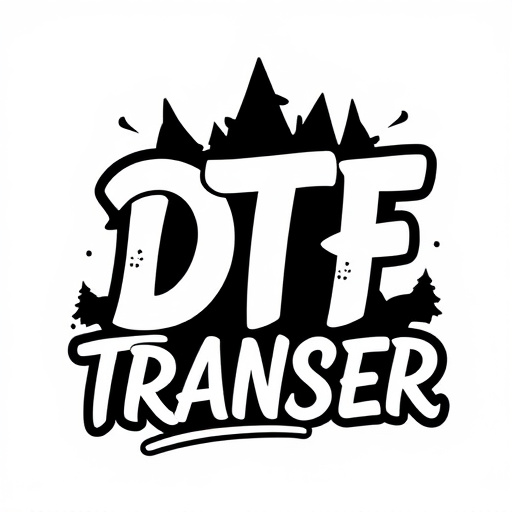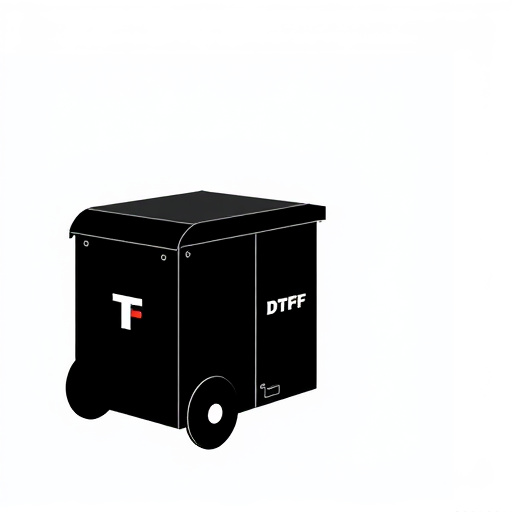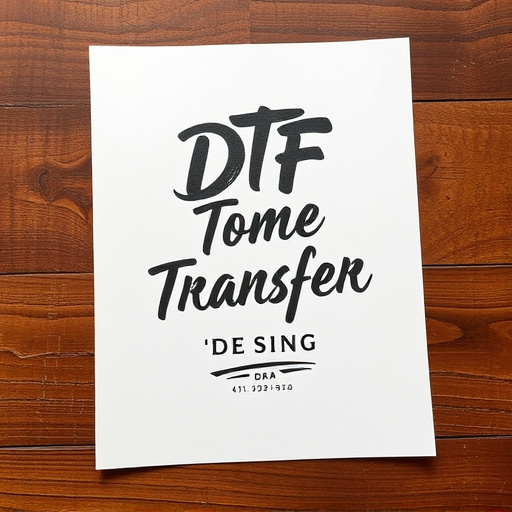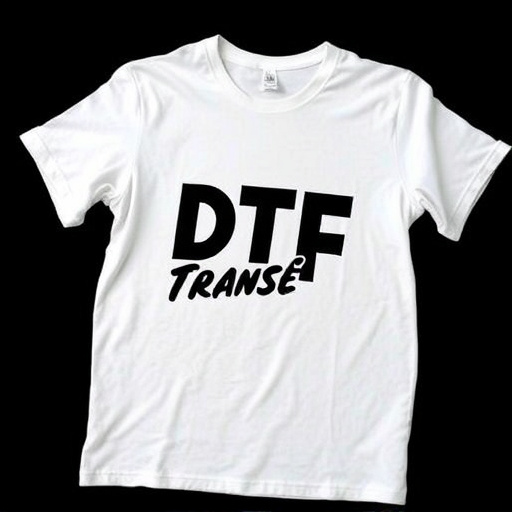Direct-to-film (DTF) transfer technology is revolutionizing printing in textiles, offering high-quality prints directly onto fabrics with superior color accuracy and longevity. Using specialized inkjet printers, DTF maintains vibrant colors through multiple washes, making it a game-changer for the fashion industry. This method provides designers with a swift, cost-effective alternative to conventional printing while ensuring prints remain indelible even after frequent launderings. The optimal DTF printing technology involves selecting modern thermal methods for superior color accuracy and durability, considering factors like resolution, color gamut, ink types, and printer capabilities for diverse materials. DTF transfers have evolved to withstand multiple wash cycles, dispelling myths about their durability, and are ideal for promotional products, custom apparel, and event merchandise that require intricate designs and vibrant colors while maintaining brand visibility.
“Discover the revolutionary world of Direct-to-Film (DTF) Transfer technology and its unparalleled ability to produce prints that withstand the test of time. This cutting-edge process ensures DTF prints maintain remarkable quality even after numerous washes, offering a unique blend of longevity and durability.
From its scientific foundations to real-world applications, this article explores everything you need to know about DTF Printing, debunking common misconceptions and highlighting why it’s the preferred choice for many.”
- Understanding Direct-to-Film (DTF) Transfer: A Technological Breakthrough
- The Science Behind DTF's Superior Quality Retention
- Benefits of DTF Prints: Longevity and Durability Unmatched by Traditional Methods
- Choosing the Right DTF Printing Technology for Optimal Results
- Common Misconceptions about DTF Transfers Debunked
- Real-World Applications: Where DTF Prints Shine Brightest
Understanding Direct-to-Film (DTF) Transfer: A Technological Breakthrough

Direct-to-film (DTF) transfer is a groundbreaking technology that has revolutionized printing, especially in the textile industry. This innovative process allows for high-quality prints to be achieved directly onto various fabrics, eliminating the need for intermediate steps. With DTF, designs are transferred from a digital file to the fabric using specialized inkjet printers, ensuring precise and vibrant colors.
The beauty of DTF Printing lies in its ability to maintain image quality even after multiple washes, making it an excellent choice for creating durable and long-lasting garments. This technology has taken the fashion and apparel industry by storm, offering designers and brands an efficient way to bring their creative visions to life. DTF Prints have a distinct advantage over traditional printing methods as they offer superior color accuracy, quick turnaround times, and the potential for complex designs, all while maintaining exceptional wash fastness.
The Science Behind DTF's Superior Quality Retention

The quality of direct-to-film (DTF) prints is renowned for its longevity and resistance to fading—even after multiple washes. This remarkable durability stems from a sophisticated scientific process. DTF transfers involve advanced inkjet printing technology that precisely deposits pigment onto a clear film. The film then acts as a protective layer, encapsulating the design and preventing direct contact with water or detergent during washing.
This encapsulation is key to maintaining color vibrancy and definition. The inks used in DTF printing are specially formulated to resist water absorption, ensuring they remain bonded to the film and fabric fibers. This technology not only preserves the original image but also prevents the colors from running or bleeding, a common issue with traditional printing methods. Consequently, DTF prints deliver exceptional results, even after repeated launderings, making them a preferred choice for apparel and textile designers seeking long-lasting, high-quality products.
Benefits of DTF Prints: Longevity and Durability Unmatched by Traditional Methods

Direct-to-film (DTF) prints offer a significant advantage in terms of longevity and durability when compared to traditional printing methods. The process involves transferring ink directly onto fabric through a specialized printer, creating a bond that is both strong and long-lasting. This ensures that colors remain vibrant even after repeated washes, making DTF prints an excellent choice for apparel and textile applications.
Compared to traditional techniques like screen printing or heat transfer, DTF offers superior durability. The direct application of ink eliminates potential issues like faded colors or peeling layers over time. As a result, DTF prints maintain their quality and visual appeal, ensuring that designs last longer on various fabrics. This benefit is particularly valuable for businesses and individuals seeking to create high-quality, long-lasting products.
Choosing the Right DTF Printing Technology for Optimal Results

Choosing the right DTF (Direct-to-Film) printing technology is paramount for achieving high-quality results that withstand multiple washes. Not all DTF transfers are created equal; each method offers unique advantages and considerations. For instance, modern thermal printing technologies offer superior color accuracy and durability, making them ideal for creating vibrant DTF prints ready for various garments and fabrics.
When selecting a DTF printing solution, consider factors like resolution, color gamut, ink types, and the printer’s capability to handle different material types. High-resolution printers can capture intricate details, while broader color gamuts ensure rich, accurate colors. Additionally, eco-friendly inks that are resistant to fading and cracking during washing are becoming increasingly popular, catering to both environmental concerns and long-lasting print quality.
Common Misconceptions about DTF Transfers Debunked

Many enthusiasts and artists hold misconceptions about Direct-to-Film (DTF) transfers and their longevity, often assuming they lack durability for everyday use. One common belief is that DTF prints fade quickly or become unwearable after a few washes. However, this notion is far from the truth! DTF transfers have evolved significantly to meet the demands of modern printing and garment decoration.
The process involves high-quality inks and advanced printing techniques that ensure vibrant colors and crisp details. Contrary to popular belief, these prints are designed to withstand multiple wash cycles when properly cared for. The materials used in DTF printing are specifically chosen for their resistance to fading and color run, ensuring the designs maintain their integrity even after prolonged use. Debunking these misconceptions is essential as it encourages artists and creators to explore DTF as a versatile and reliable method for bringing their artwork to life on various garments.
Real-World Applications: Where DTF Prints Shine Brightest

Direct-to-film (DTF) prints have found their niche in various real-world applications, where durability and quality are paramount. From promotional merchandise to custom apparel, DTF transfers offer a unique advantage over traditional printing methods. Their ability to withstand multiple washes makes them ideal for items that see frequent use, such as t-shirts, caps, and bags. In the realm of marketing, DTF prints enable businesses to create eye-catching, long-lasting promotional products, ensuring their brand remains visible even after repeated washing.
Moreover, the versatility of DTF Printing allows for intricate designs and vibrant colors, making it a favorite among artists and designers. Whether it’s a custom T-shirt for a music festival or merchandise for a local event, DTF prints deliver exceptional results, providing a durable and visually appealing end product that stands out from the crowd.














